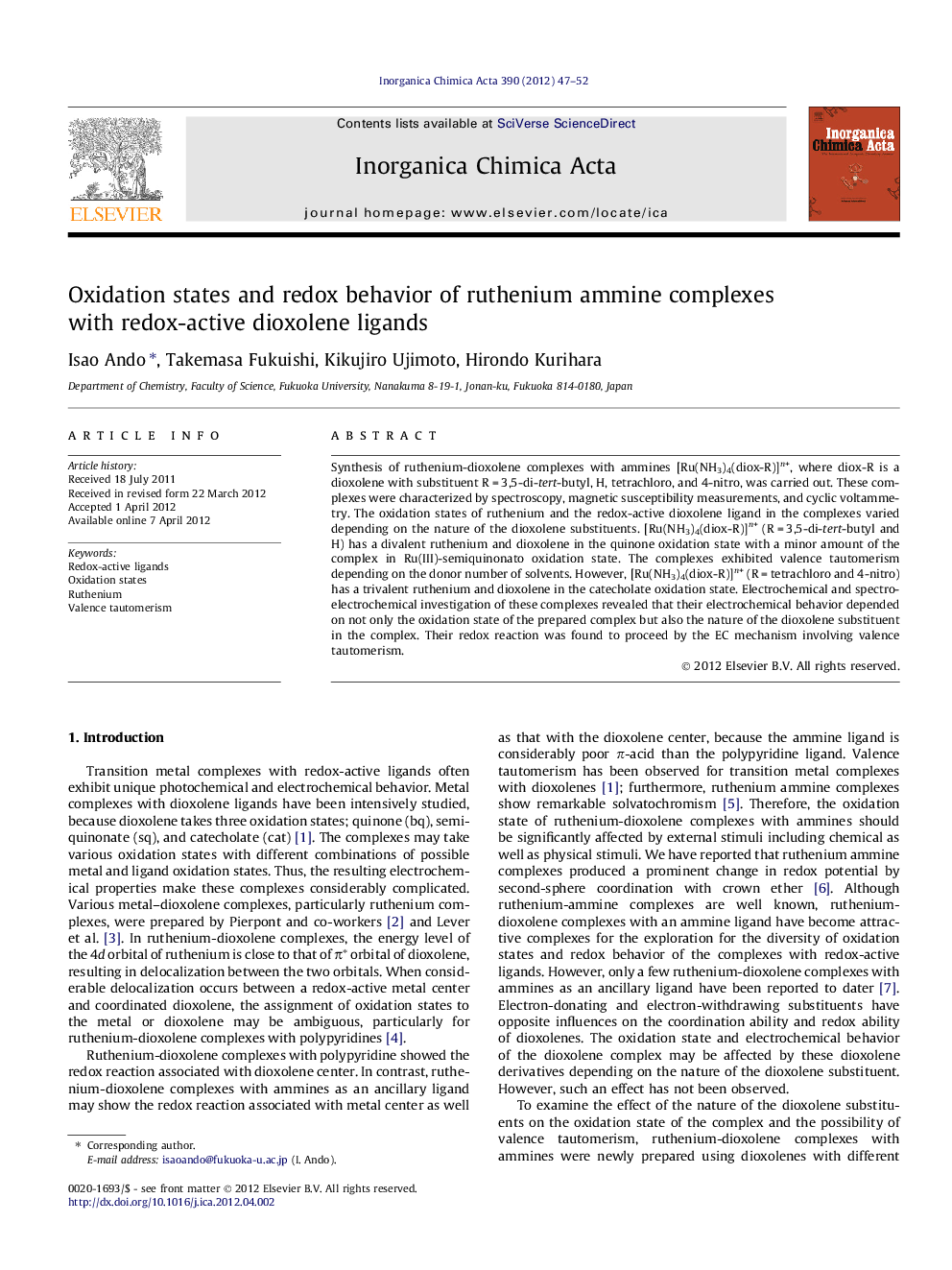| Article ID | Journal | Published Year | Pages | File Type |
|---|---|---|---|---|
| 1312432 | Inorganica Chimica Acta | 2012 | 6 Pages |
Synthesis of ruthenium-dioxolene complexes with ammines [Ru(NH3)4(diox-R)]n+, where diox-R is a dioxolene with substituent R = 3,5-di-tert-butyl, H, tetrachloro, and 4-nitro, was carried out. These complexes were characterized by spectroscopy, magnetic susceptibility measurements, and cyclic voltammetry. The oxidation states of ruthenium and the redox-active dioxolene ligand in the complexes varied depending on the nature of the dioxolene substituents. [Ru(NH3)4(diox-R)]n+ (R = 3,5-di-tert-butyl and H) has a divalent ruthenium and dioxolene in the quinone oxidation state with a minor amount of the complex in Ru(III)-semiquinonato oxidation state. The complexes exhibited valence tautomerism depending on the donor number of solvents. However, [Ru(NH3)4(diox-R)]n+ (R = tetrachloro and 4-nitro) has a trivalent ruthenium and dioxolene in the catecholate oxidation state. Electrochemical and spectroelectrochemical investigation of these complexes revealed that their electrochemical behavior depended on not only the oxidation state of the prepared complex but also the nature of the dioxolene substituent in the complex. Their redox reaction was found to proceed by the EC mechanism involving valence tautomerism.
Graphical abstractRuthenium-dioxolene complexes with ammines were prepared and both ruthenium and dioxolene oxidation states were characterized. The oxidation state varied depending on substituents of dioxolenes. The complexes contained valence tautomers and exhibited valence tautomerism by solvents. The redox reaction proceeds through EC mechanism including valence tautomerism. The redox behavior is possible to be affected by external stimuli.Figure optionsDownload full-size imageDownload as PowerPoint slideHighlights► We synthesized ruthenium–ammine complexes of dioxolenes containing a valence tautomer. ► The oxidation state varied depending on the substituents of the dioxolene. ► The complexes showed the valence tautomerism with solvents. ► Their redox reaction proceeded through the valence tautomeric equilibria.
